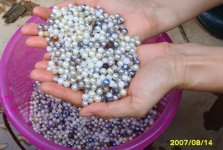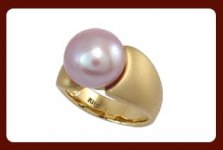Raisondetre
New Member
- Joined
- Apr 19, 2007
- Messages
- 941
That's a great idea. I have seen first hand how it is in the clothing industry, but farming is a way harder existence. I'm still amazed at how cheap freshwater pearls are and I believe they are grossly undervalued. With the water pollution issue, there's a limited timeframe before they get wiped out.
I'm just curious - were the shells physically destroyed (I'm sure most would be), or is it that pearls harvested from dead shells (assuming you can find some) are not marketable? It's probably not feasible to go searching through piles of debris just to find a few pearls, but I have heard the term "dead" pearls, or is it just a gimmick? I know with rapid decomposition the acids will corrode the calcium carbonate though.
I'm just curious - were the shells physically destroyed (I'm sure most would be), or is it that pearls harvested from dead shells (assuming you can find some) are not marketable? It's probably not feasible to go searching through piles of debris just to find a few pearls, but I have heard the term "dead" pearls, or is it just a gimmick? I know with rapid decomposition the acids will corrode the calcium carbonate though.
Last edited:


